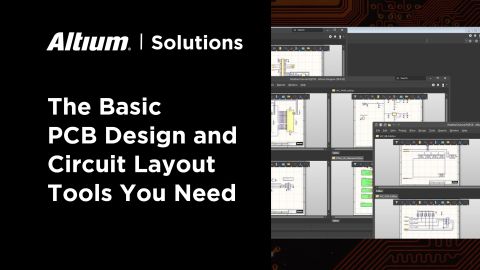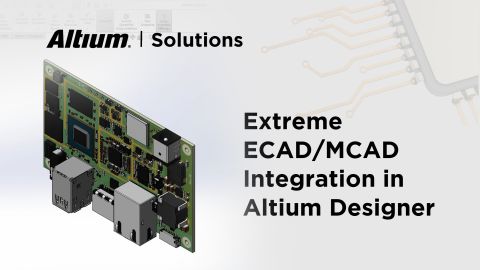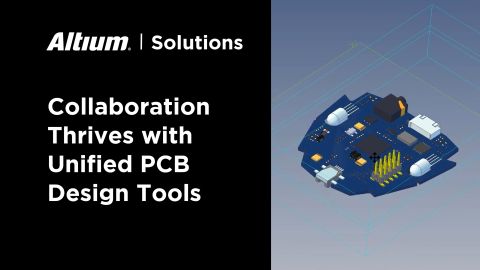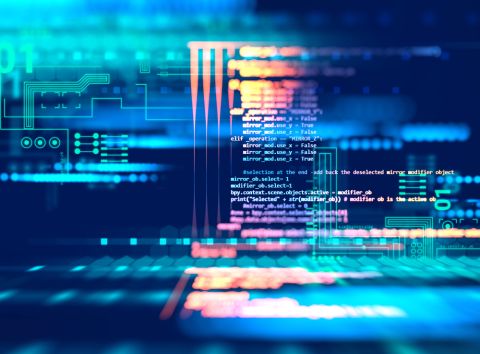Running on Any Device: Does It Matter?
Does your device matter?
That might seem like a strange question for a design post. However, it is increasingly becoming an important one. We’re in the midst of some pretty significant changes both technologically and culturally in engineering but also the workplace in general. So dig into this post. You might find it more relevant than you initially thought.
This post looks at how engineering work is changing and the implications of ECAD running on any device.
Desktop Bound, Cloud Free
Getting on the same page is essential, especially with terminology. Before we dive into the issues of the changing workplace, let’s talk about how ECAD software works.
Traditionally, ECAD applications have run on desktops and, perhaps, laptops. This software type predates the emergence of smart devices. However, even with today’s devices, their problem with running ECAD has been compute power. Today’s board systems are getting incredibly dense. Furthermore, their nets are becoming seriously complex. There’s too much to handle for most devices outside desktops and laptops.
Now, let’s talk about cloud-enabled ECAD applications. In this scenario, the computations for ECAD software does not run locally on your device. Instead, a browser acts as the interface. The compute draw is on the servers in the cloud. The key, instead, is network bandwidth. Browser commands need to be sent from the device to the cloud where the application reacts and sends updates back to the browser on the device.
Note that we’re not talking about the device, per se. We’re talking about the browser. If an ECAD application can run in a browser, then it can be run on practically any device with a browser and a good network connection.
Next, let’s talk about why we should even care.
Away from the Desk, Running Out of Time
The time of desk-bound engineers is passing. A couple of years ago, we conducted a research study on many aspects of the modern engineer’s work day. The findings surprised us. Many engineers spent far less time at their desk than we imagined. They were often on the move from project reviews in conference rooms to the manufacturing floor to a supplier’s campus to a customer’s office.
The other important takeaway from that study was that today’s engineers often run out of time during a normal 40-hour workweek. This scheduling issue is, at least in part, due to the inherent nature of their work. If an error gets downstream, it is guaranteed to come to you as a change order, disrupting the rest of your current work. As a result, many engineers are working late and on the weekends.
Now, let’s combine a few of these thoughts.
- ECAD software runs on desktops and laptops, often only accessible at desks.
- Engineers don’t spend a significant amount of time at their desks.
- All sorts of fire drills disrupt Engineers' work.
All of this together doesn’t paint a good picture of productivity.
Productivity on the Move
Now, you might ask yourself, why would you want to dive into a board design in the middle of these other activities? Well, these activities are pretty closely related to that work.
An engineer might need to check on a component in their design in a project management meeting.
An engineer might want to talk through a thermal issue at a supplier’s campus.
An engineer might need to get a clarification from a customer about clearances in the enclosure.
With a desktop-bound ECAD application, the engineer would wait to return to their desk and run the software before they could get the information. Measure the time between initial identification of the issue and its resolution. That represents a quantifiable delay in the development process.
With a cloud-enabled ECAD application, the engineer opens a browser and gets the information immediately. They then resolve that issue with the project manager, supplier, or customer instantly. Apply that every day, and you accelerate your development process.
The BYOD Movement
Another trend related to this topic is the Bring-Your-Own-Device (BYOD) movement. The idea here is that many millennials don’t just use a device for work. It is intimately connected with their personal life as well. Furthermore, they don’t see a hard separation between work life and personal life. They see the this-device-is-for-work and that-device-is-for-personal-time as ridiculous. Lastly, they invest a significant amount of time and money personalizing their device. It’s theirs. It’s part of them. Why would they want to leave it at home? Why not use it for work?
Companies are relaxing the traditional separation of work and play when it comes to devices to recruit and accommodate the latest generation in the workforce. Many are encouraging employees to bring their own devices in the work environment.
The Takeaway
Many look at cloud-enabled solutions and think about the compute power or collaboration it enables. And, yes, it does that. However, in the context of an engineer’s real-world work, resolving design issues instantly daily truly makes a difference.
So. Yes. Your device does matter












